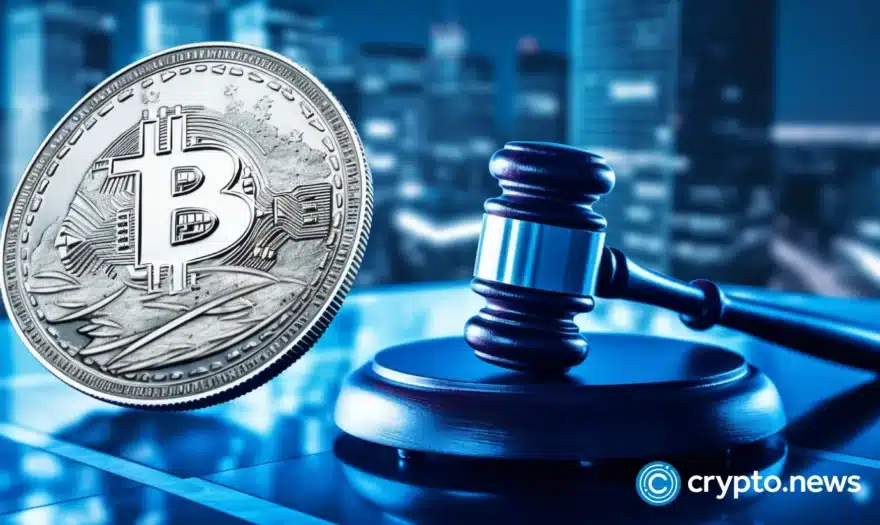Solar token surges 170% in one week

One digital currency has been shining bright in a week of turbulent market conditions: Solar (SXP). This lesser-known cryptocurrency has unexpectedly gained 170% in just one week.
Defying the broader market trend, Solar (SXP) has skyrocketed an astounding 170% in the past seven days, dazzling investors and sending a ripple of excitement through the industry.
With its price perched at $0.77 as of Apr. 3, SXP has cast a shadow over the sluggishly-performing bitcoin (BTC) and ether (ETH).
While bitcoin continues to trade sideways, hovering around $28,000 mark, ether has eked out a modest 2% gain, currently trading at $1,809.
Amidst this rather uninspiring backdrop, Solar’s meteoric ascent has captured the imagination of the crypto community. Let’s understand its price action and what’s driving the surge.
What is Solar (SXP)
Spawned from Binance’s acquisition of Swipe in July 2020, Solar has transformed into a decentralized, energy-efficient, and community-centric blockchain, aiming to compete with titans like Ethereum and Solana (SOL).
Solar’s cutting-edge offerings tackle some of the most critical challenges currently facing the world of blockchain.
At its essence, Solar is a Layer 1, open-source blockchain network featuring decentralized autonomous governance (DAO) governance, a proof-of-stake (PoS) consensus mechanism, and a Side Ledger Protocol.
This potent mix enables the creation of fungible and non-fungible tokens (NFTs) and decentralized applications (dapps) with remarkable efficiency and accessibility.
Solar’s native coin, SXP, powers the network, serving as governance and utility tokens and granting its holders voting privileges and the power to influence governance proposals.
Solar’s ecosystem evolves quickly as developers continually refine its features and functionalities.
A key expansion area is the Solar Wallet, a user-friendly solution for storing SXP coins, crafting new tokens or applications, and participating in delegate voting. Accessible through mobile and desktop applications, the Solar Wallet further simplifies the user experience.
The exciting Solar Metaverse and Solar Launchpad are also on the horizon. The former aims to revolutionize user experience, while the latter promises to streamline the launch of applications and tokens within the Solar network. Both features are primed to unlock new opportunities and value for the Solar ecosystem.
Despite Solar’s intentions to tackle major pain points in the blockchain domain, it is not without flaws. Although faster than Ethereum and Bitcoin networks, its eight-second block submission time trails behind other blockchain platforms, such as Solana.
With a steadfast commitment to empowering developers and nurturing community-driven governance, Solar could play a significant role in the future of decentralized networks.
SXP’s price action analysis
The cryptocurrency has catapulted itself into the limelight in a week that can only be described as a rollercoaster ride for Solar (SXP).
Starting from a modest opening price of $0.2563 on Mar. 28, Solar embarked on an exhilarating journey, reaching a peak of $0.774 on Apr. 3, an increase of nearly 200%.
Meanwhile, the trading volume, initially a humble $185.36 million, surged to a staggering $1.273 billion by Mar. 31, a surge of nearly 600%, reflecting the growing interest and confidence in Solar’s potential.
This unexpected surge in Solar’s price and popularity raises questions about the factors fueling its rise and what the future might hold for this enigmatic cryptocurrency.
Why is SXP surging
A primary factor driving SXP’s recent surge is the support from Binance (BNB), the leading global crypto exchange.
Binance announced its backing for the mainnet swap and rebranding plan of Swipe (SXP) to Solar (SXP), which entails migrating all ERC20, BEP2, and BEP20 Swipe (SXP) tokens to the Solar mainnet at a ratio of 1 Swipe (SXP) = 1 Solar (SXP).
Following the completion of the mainnet swap, Binance will exclusively support deposits and withdrawals of Solar (SXP) tokens via its mainnet, no longer catering to Swipe (SXP) tokens.
This development comes as the Solar Network undergoes continuous improvements, with a new wallet design expected to be released this year.
Additionally, a brand-new block explorer, Solarscan, went live a few days ago, offering enhanced functionality and user experience. Solarscan was developed from scratch to work seamlessly with Solar Core 5.0, which is set to be released later this year.
In celebration of Solar’s mainnet debut anniversary, developers distributed their first SXP tokens through Twitter, with fifty people receiving one hundred SXP each.
This event, combined with the upcoming mainnet swap and rebranding and the innovative user experience provided by Solarscan, has significantly contributed to the remarkable growth of SXP’s value.
SXP technical analysis and price prediction
The 200-day simple moving average (SMA) for SXP has been flashing a green light for investors since Mar. 28, 2023. This bullish signal, coupled with the asset’s price rising above the 50-day SMA, paints a bright picture of the cryptocurrency’s performance.
However, the current RSI value of 84.84 raises a red flag, indicating that SXP has entered the overbought territory. The RSI, a widely-used momentum oscillator, helps determine whether an asset is oversold (below 30) or overbought (above 70).
According to CoinCodex, SXP is expected to experience a short-term decline of around 18%, dropping its price to $0.607728 by Apr. 11.
Despite this temporary setback, SXP is predicted to make a remarkable comeback, skyrocketing to $1.645556 by May 2. This substantial increase represents a 120% jump from its current price levels.
In agreement with CoinCodex, DigitalCoin also forecasts a bright future for SXP. The platform anticipates an average price of $1.59 for the cryptocurrency in 2023, followed by a further increase to $2.50 in 2025.
It’s crucial to remember that the cryptocurrency market is inherently volatile, and price predictions should be taken with a grain of salt.
Before making investment decisions, traders should conduct extensive research, consider multiple factors, and fully understand the risks involved. Never invest more than you can afford to lose, and always practice responsible risk management.















